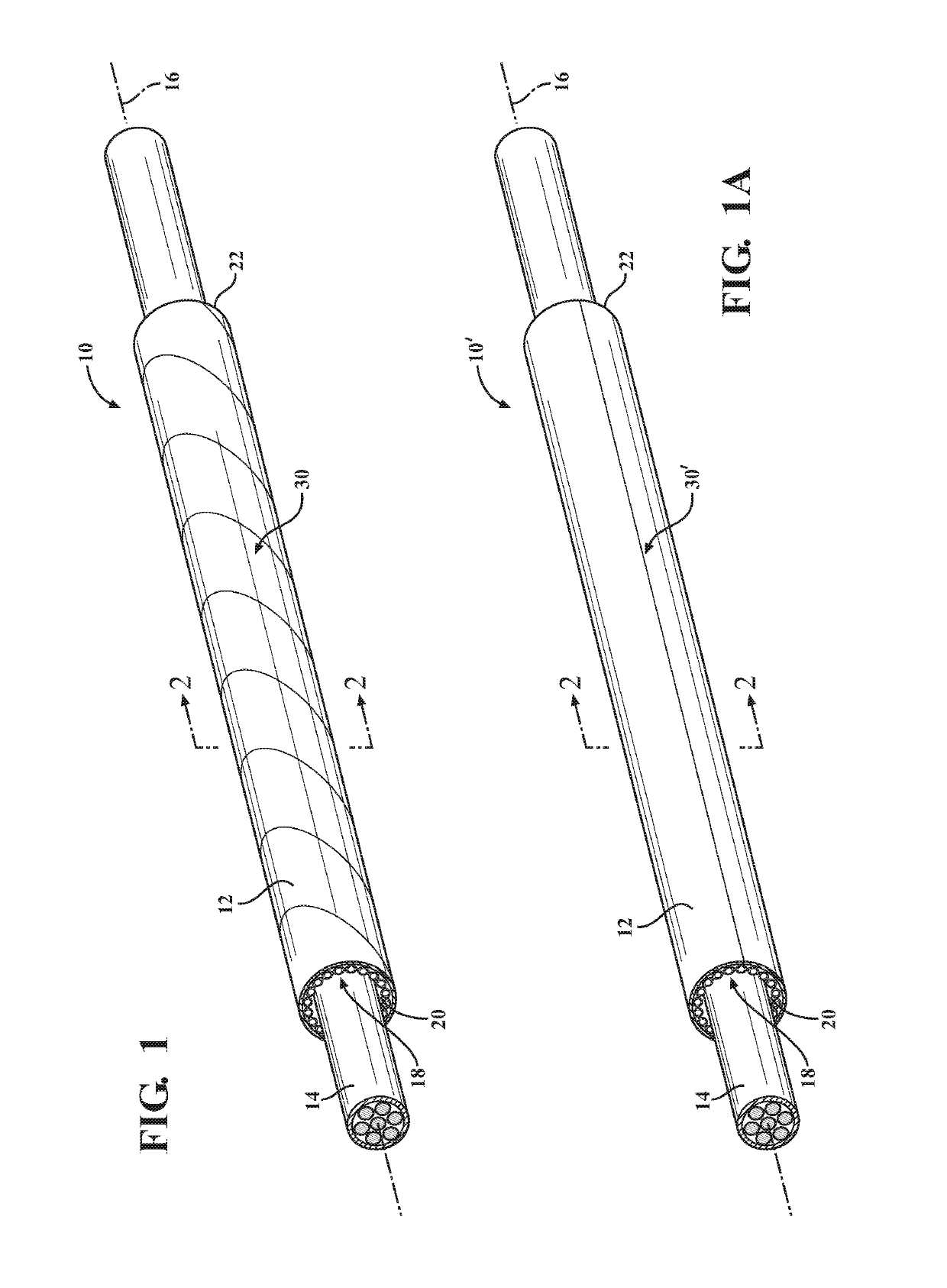Woven tubular thermal sleeve and method of construction thereof
a thermal sleeve and tubular technology, applied in the field of thermal protective woven tubular sleeves, can solve the problems of potential problems in use, difficult to overcome known protective sleeves, and generally very stiff woven sleeves, and achieve the effect of enhancing longitudinal flexibility and sleev
- Summary
- Abstract
- Description
- Claims
- Application Information
AI Technical Summary
Benefits of technology
Problems solved by technology
Method used
Image
Examples
Embodiment Construction
[0031]Referring in more detail to the drawings, FIG. 1 shows a schematic representation of a thermally protective tubular woven sleeve, referred to hereafter as sleeve 10, constructed in accordance with one aspect of the invention. It is to be understood that by tubular, it is meant that the sleeve 10 has a circumferentially continuous wall 12, and that it does not have free lengthwise extending side edges. The sleeve 10 is intended for routing and protecting elongate members 14, such as wires, a wire harness, or conduit, for example, from exposure to abrasion and the ingress of contamination, debris and the like, while also shielding the elongate members 14 against exposure to heat. The elongate wall 12 extends lengthwise along a central axis 16 and bounds a circumferentially enclosed cavity 18 that extends along the central axis 16 between opposite open ends 20, 22. The wall 12 is woven with warp yarns 24 and fill yarns, wherein the fill yarns include first fill yarn 26a and secon...
PUM
| Property | Measurement | Unit |
|---|---|---|
| melt temperature | aaaaa | aaaaa |
| hoop strength | aaaaa | aaaaa |
| non-heat-settable | aaaaa | aaaaa |
Abstract
Description
Claims
Application Information
 Login to View More
Login to View More - R&D
- Intellectual Property
- Life Sciences
- Materials
- Tech Scout
- Unparalleled Data Quality
- Higher Quality Content
- 60% Fewer Hallucinations
Browse by: Latest US Patents, China's latest patents, Technical Efficacy Thesaurus, Application Domain, Technology Topic, Popular Technical Reports.
© 2025 PatSnap. All rights reserved.Legal|Privacy policy|Modern Slavery Act Transparency Statement|Sitemap|About US| Contact US: help@patsnap.com


